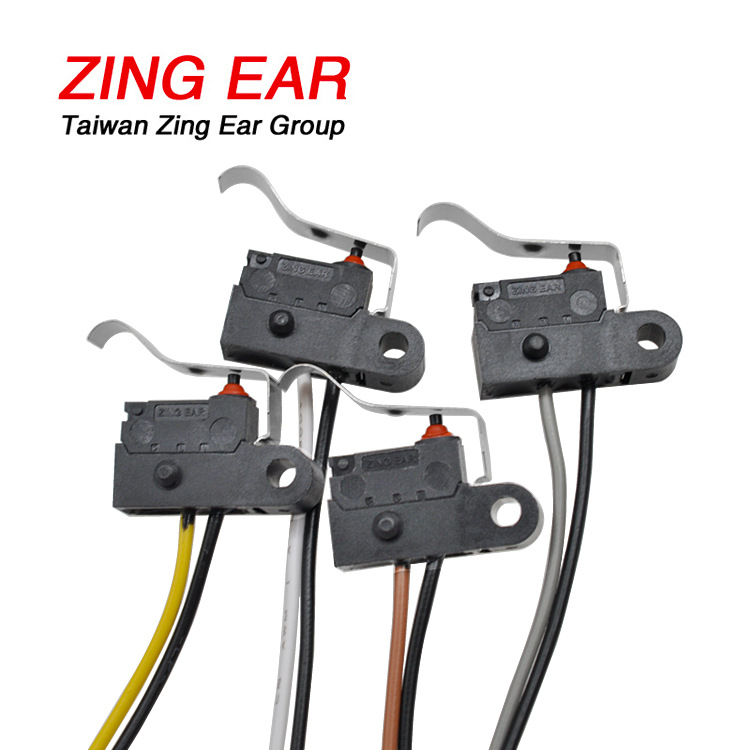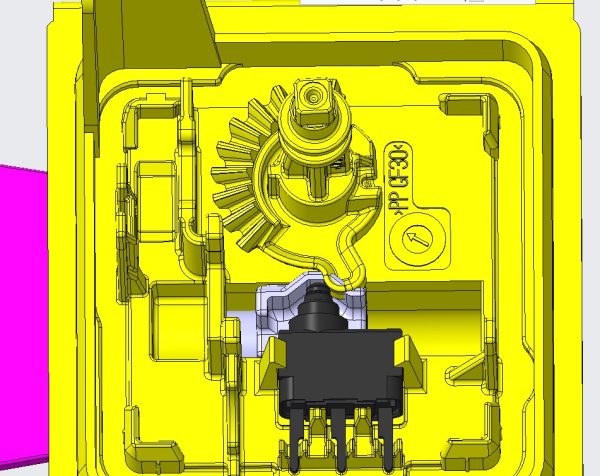With the rapid rise of new energy vehicles (NEVs), user expectations around charging safety, interface reliability, and ease of operation are higher than ever. One critical component ensuring these standards is the charging port locking actuator—designed to prevent the charging plug from being accidentally or unlawfully removed while power is still flowing.
Among the components that enable this mechanism, the micro switch plays a pivotal role in perception, feedback, and linkage control. Although often overlooked, this small switch is essential to the operation of the charging port lock. This article explores its function and importance, using the charging port locking actuator as a practical application example.

🔐 Why Do EV Charging Ports Need a Locking Actuator?
The presence of a locking actuator is no coincidence—it serves a vital function. EV charging involves high voltage and significant current. If a charging cable is removed mid-process without first powering down, it could result in equipment damage, electrical arcing, or even severe electric shock. To mitigate these risks, charging locks are now a standard feature in most EVs, functioning as a core safety control system.
⚡ Ensuring Safe and Stable Charging
For charging to be safe and uninterrupted, the charging plug must be firmly secured after insertion. Even slight movements can cause disconnection, potentially harming the battery or affecting charging performance. The locking actuator ensures a robust physical connection, maintaining continuous and stable power flow.
🔒 Preventing Theft, Tampering, and Charging Interruptions
Public charging stations pose additional challenges: accidental or malicious unplugging. The locking actuator, combined with micro switch feedback, forms an effective electronic safeguard that only authorized actions can trigger, improving security and system reliability.
📜 Global Standards Driving Locking Device Requirements
Regulations across regions—including China’s GB/T, EU’s IEC 61851, and USA’s SAE J1772—now mandate charging connector locking functions. What was once optional is now a mandatory compliance feature in global EV markets, further emphasizing the importance of precise and reliable locking mechanisms.
🧩 What Is a Micro Switch?
Definition
A micro switch (or snap-action switch) is a precision electrical switch activated by a minimal mechanical force. In EV locking actuators, it detects the position of the locking mechanism—whether fully locked or unlocked—and sends real-time status signals to the vehicle’s control unit.
Types of Micro Switches
Depending on the application, micro switches come in several types:
- Basic micro switches
- Sealed and waterproof micro switches
- Subminiature micro switches
For car charging locks, ultra-small waterproof micro switches are typically used. These models offer:
- IP67 protection
- Compact packaging
- Over 1 million actuation cycles
- Resistance to dust, water, and vibration
These features make them ideal for automotive environments with frequent usage and harsh conditions.
🔄 Micro Switch Application in Locking Actuators
Inside the actuator, the micro switch is usually installed beneath the locking rod. As the locking rod moves, a protrusion presses against the micro switch’s actuator (often through a protective soft shell), triggering it during both the locking and unlocking processes.
✅ Locking Process
- When a charging cable is inserted, the vehicle’s ECU activates a motor to rotate the locking rod.
- Once the locking rod reaches its final position, the protruding section presses the micro switch.
- The micro switch sends a “lock engaged” signal and simultaneously stops the motor, ensuring accurate lock positioning.
- At this point, the plug is securely locked and cannot be removed, guaranteeing safe charging.
🔓 Unlocking Process
- After charging ends or the system detects a full charge, the motor rotates in reverse.
- As the locking rod disengages, it once again presses the micro switch.
- The micro switch sends a “lock released” signal to the ECU, confirming that the cable can now be safely removed.
🔚 Conclusion
Though compact in size, the micro switch is a key enabler of secure and intelligent charging in electric vehicles. As regulations and user expectations continue to evolve, the demand for high-performance, reliable micro switch solutions in charging port actuators will only grow.
If you’re developing EV components or looking to integrate robust micro switches into your actuator design, understanding their function and selecting the right model is crucial to delivering both safety and performance.

